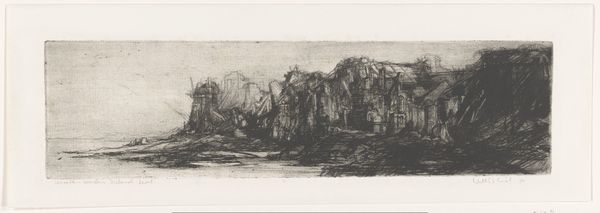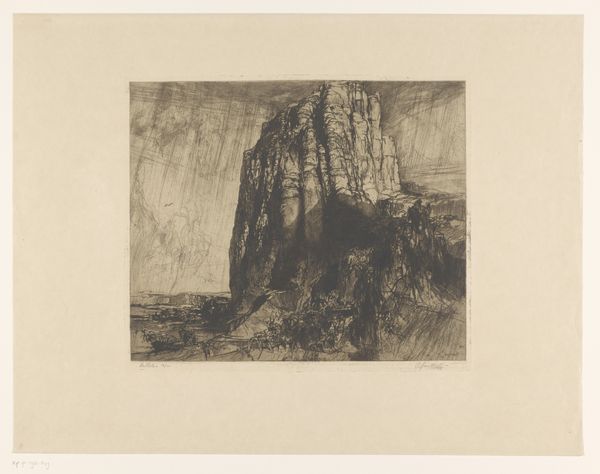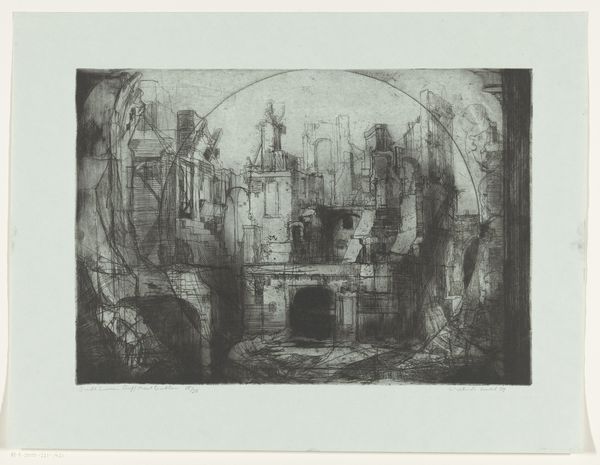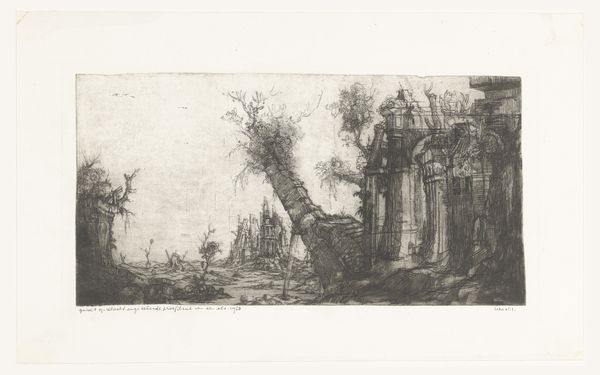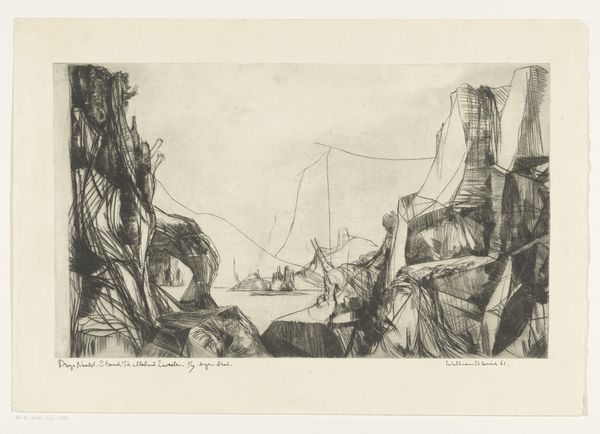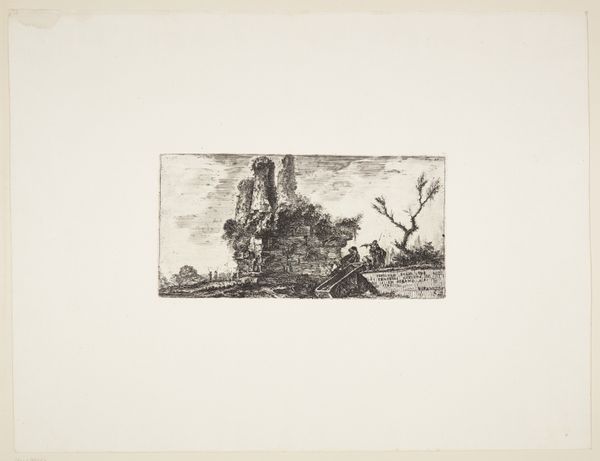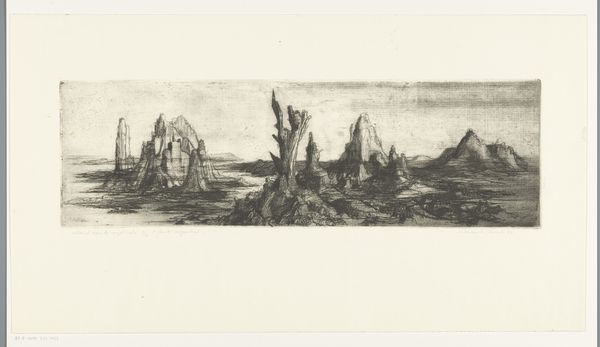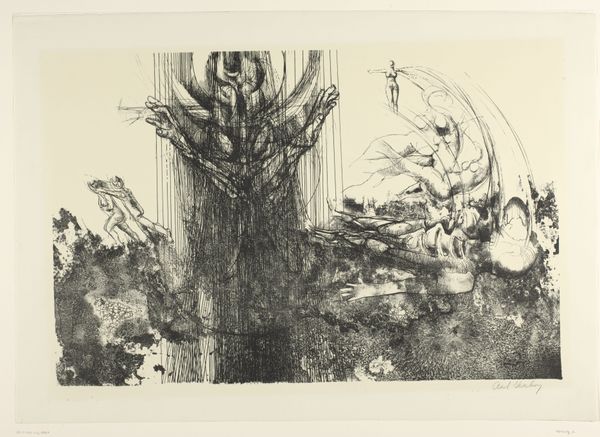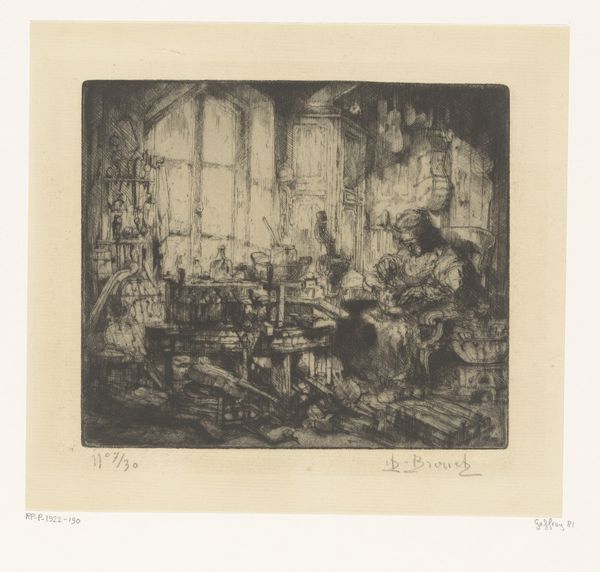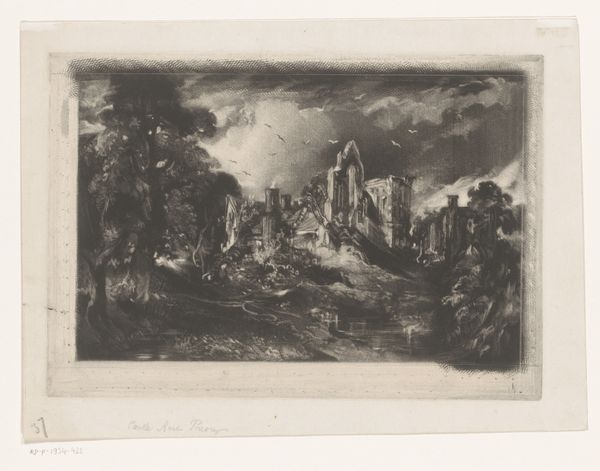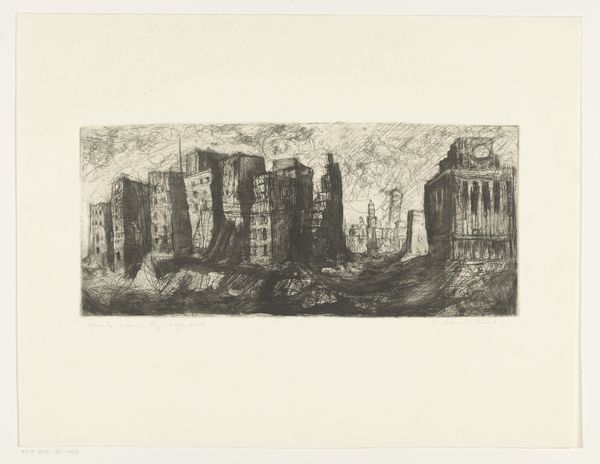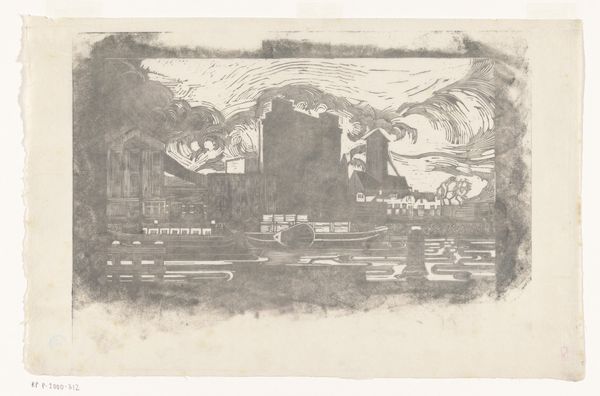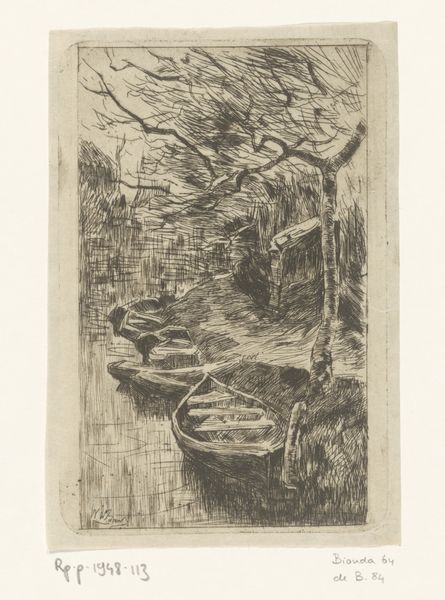
print, etching
# print
#
etching
#
landscape
#
abstraction
#
monochrome
Dimensions: height 335 mm, width 502 mm, height 531 mm, width 701 mm
Copyright: Rijks Museum: Open Domain
Editor: We’re looking at “Rotslandschap,” or “Rock Landscape,” a 1970 etching by Dirkje Kuik. It’s a monochrome print, and it strikes me as quite desolate, almost post-apocalyptic. What do you see in this piece? Curator: It’s fascinating, isn't it? I see a critique of industrialization and its impact on the environment. The monochrome palette amplifies the sense of ruin, the barrenness. Consider the date, 1970. What social and political movements were gaining momentum then? Editor: Environmental activism, definitely, along with second-wave feminism. Curator: Exactly. Kuik, as a woman artist working in a male-dominated field, may be using this landscape to comment on the destructive forces of patriarchy and unchecked capitalism. Do you see any elements that could represent resilience or resistance? Editor: Perhaps the suggestion of architectural ruins on the left – a reminder of what once stood, hinting at potential for rebuilding? Also, is that an eclipsed sun behind the jagged forms? Curator: Good observations. That eclipsed sun could symbolize a disrupted natural order, a world out of balance. It challenges us to consider our role in this destruction and the possibilities for restoration. The inclusion of architectural ruins prompts thoughts about coloniality too. Where is it really, this so-called landscape? Is it Europe? Somewhere the Europeean gaze falls upon? Is it post-something? This work could speak to the devastation caused by colonialism's environmental impacts. How can this be interpreted today, reflecting on intersectional issues? Editor: It’s powerful how this seemingly simple landscape can evoke so many layers of meaning. I hadn’t considered the colonial element or the feminist perspective before. Curator: It’s precisely this intersectional reading that allows us to connect art history with contemporary social and political dialogues. What did you learn today? Editor: To broaden my scope. Looking at the piece not just as a landscape, but as a statement about the interconnectedness of social justice and ecological awareness. Thanks.
Comments
No comments
Be the first to comment and join the conversation on the ultimate creative platform.
